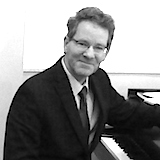Forming the Life of the Congregation Through Music
Part One: Three Questions
All churches come together to sing, and most Christians would readily affirm that this shared musical practice is a significant element in spiritual life. Yet the exact manner in which music exerts powers of spiritual formation may seem amorphous and elusive. I will approach the subject by asking three questions:
How do song lyrics affect us?
What kinds of musical experiences may subtly exclude some Christians?
What happens when music in the church borrows from music in the culture?
I will explore each of these and then conclude with suggestions for understanding theologically rich lyrics, inviting participation from all congregants, and innovating in areas where the culture may prove unhelpful.
Question 1: How Do Song Lyrics Affect Us?
Lyrics have the power to teach, but indirectly; there are very few songs that resemble a paragraph from a seminary textbook. To illustrate the point, readers may find it amusing to try setting the following doctrinal statement to music:
We believe in one God (eternal, omnipotent, omniscient, and omnipresent) existing as three persons – Father, Son, and Holy Spirit, one in nature, attributes, power, and glory.
Songwriters will find this text unwieldy, and a congregation will find it downright clumsy, even with a nice melody.
Even the most theologically rich lyrics reach their best moments not in assertion but in evocation.
In the same way prosaic theological propositions do not usually make good song lyrics simply because they are too direct and too plain. Songs, by their nature, require language evoking imagery and narrative rather than asserting abstract facts, and they teach by awakening the imagination to Kingdom realities.
 Even the most theologically rich lyrics reach their best moments not in assertion but in evocation: they speak more profoundly in image than in proposition. For example, the unifying theme of Immortal, Invisible is the paradox of God’s immanence and transcendence—that he is both close to us and distant from us. The finest line of the first verse is In light inaccessible hid from our eyes, which is both a vivid image (that of blinding light) and also poetically ironic (insofar as light, normally the vehicle of sight, here precludes it). The second verse also peaks in a poetic line: Unresting, unhasting, and silent as light. The reader imagines the human states of repose and hurry, and then sweeps them both aside as inadequate to describe the activity of God. Light is normally silent, but here the simile illuminates the purity, energy, and life behind even God’s unperceived deeds: he is silent as light, not quiet as a mouse.1
Even the most theologically rich lyrics reach their best moments not in assertion but in evocation: they speak more profoundly in image than in proposition. For example, the unifying theme of Immortal, Invisible is the paradox of God’s immanence and transcendence—that he is both close to us and distant from us. The finest line of the first verse is In light inaccessible hid from our eyes, which is both a vivid image (that of blinding light) and also poetically ironic (insofar as light, normally the vehicle of sight, here precludes it). The second verse also peaks in a poetic line: Unresting, unhasting, and silent as light. The reader imagines the human states of repose and hurry, and then sweeps them both aside as inadequate to describe the activity of God. Light is normally silent, but here the simile illuminates the purity, energy, and life behind even God’s unperceived deeds: he is silent as light, not quiet as a mouse.1
Holy, Holy, Holy is an instance of Trinitarian teaching in song. Nevertheless, the direct statement God in Three Persons, blessed Trinity, while edifying, comes off as static and formulary when compared with dramatic scenes like Casting down their golden crowns around the glassy sea. This latter line draws upon things we can imagine: we have not seen the saints casting down their crowns (let alone the glassy sea) but we do know what crowns are and we have seen the ordinary sea, so our imaginations can make the leap and the text comes to life in our minds.


